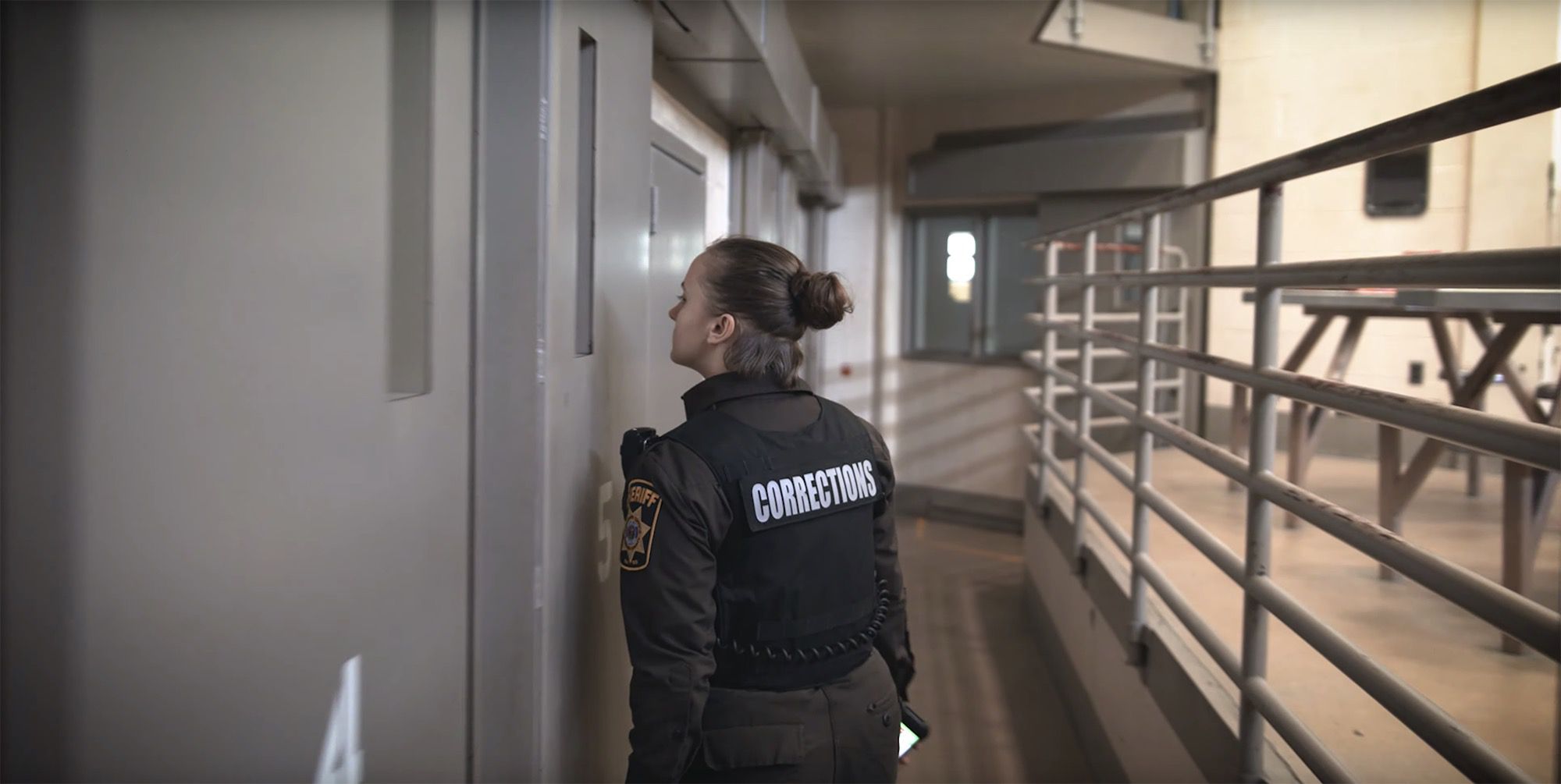How Do I Get to 100% Round Compliance?
Believe it or not, people in corrections are very creative and like to make up bad-ass names for many things, like “sallyport,” “prison punch,” or “jail purse.” Security rounds, watch tours, guard tours, block checks, cell checks, headcount…the list goes on. While these may not be as “bad-ass” as some other names, this task holds many different nicknames. But variations of this task aside, no matter what you call rounds, they are mission-critical to safety and security.
At the end of the day, we all have someone checking our jail’s compliance against some standard. States like Minnesota and Texas have strict guidelines from the state jail audit board while other states have more lenient systems and ultimately the auditor is just John Q. Voting Public. Regardless of who checks compliance, jail rounds are critical for adequate inmate supervision. Officers must continually check the safety of all doors, fixtures, and safety features while being present and checking on the inmate population.
This is why high-round compliance matters. This blog highlights the importance of round compliance and provides jails with the tools to achieve 100% round compliance. This demands sound policy, good communication, and consistent supervision to execute properly.
Does Jail Size Matter?
Whether or not jail size affects a facility’s compliance score is a common question that is asked throughout the entire corrections industry. The overall viewpoint is that 100% round compliance is not attainable because of the unique situations facing facilities of all different sizes. The common belief is that small jails cannot attain high compliance because of staff shortages, the shared responsibility of all jail duties among few officers, poor employee job performance, no real need to gain high compliance numbers, and all inmates can be seen from control.
However, large jails face these issues on a larger scale but face essentially the same root problems.The American Jail Association published this snippet on their website, “Mega jails have a 1,000-plus bed capacity. Large jails have a 250- to 999-bed capacity. Medium jails have a 50- to 249-bed capacity. Small jails have a 1 to 49-bed capacity. Small jails make up the largest percentage of local correctional facilities, followed by medium, large, and mega, respectively.” None of this matters.
I had the opportunity to attend the National Jail Leadership Command Academy (NJLCA) Class #27, in Huntsville Texas. Anecdotally, NJLCA is one of the best comprehensive programs for jail leaders, I left with many actionable skills and a meaningful network of corrections professionals. During NJLCA, the jail diversity was drastic from small 10-bed facilities to 10,000+ inmates.
Jails of all sizes are facing similar problems. Sure the size of the facility certainly has implications of manpower and workflow, as well as regional unique problems, but they all face similar issues. 100% round compliance can be achieved by adhering to the best practices of jail management, regardless of the jail size. So, how can a facility achieve 100% round compliance?
The Basics of Getting to 100% Round Compliance
In your agency's journey to gain round compliance, keep in mind that like most things in life, these are long-term changes. These adjustments require a heavy initial staff and time investment, followed by moderate to light monitoring and massaging once everyone is trained. Some of these are culture shifts that will take time and effort from the entire department.
The most common way to document rounds data in jails is with pen and paper, followed closely by jail management log entries, and mobile rounds monitoring solutions. The method used does impact the efficiency and accuracy of monitoring rounds and calculating compliance.
Paper and Pen
Paper and pen is the most widely used system in jails and prisons, however, there are some critical downsides to paper. Paper logs can easily be “pencil whipped” and is a trust-based system with verification being a time-intensive video review. Deciphering an officer’s entries is as bad as reading a doctor’s handwriting, and this bad handwriting weakens legal defense.
Not only is deciphering a new skill to teach supervisors but they now have to track down missing entries or logs and spend time looking through boxes of paper that may not actually contain the information you are looking for. Those boxes of paper have to be categorized and stored in a secure location. Jails’ most frequent complaint of paper in pencil is summed up in an old corrections adage “If it’s not documented, it never happened”.
Jail Management Log
The jail management system (JMS) log is a step towards improving pen and paper downfalls. The logs are digitally time-stamped, with no poor handwriting to decipher, no physical storage of logs, and are much easier and less time-intensive to generate insightful reports. However, one downside to the JMS log is that you must have a computer at each officer’s workstation, which can be costly. Plus, the officer spends a lot of time tethered to a workstation and the log can be easily neglected during officer rounds.
There is also the time-consuming process of rounds verification through video, as a log entry is timestamped there is no proof of physical presence in the housing units. Another time-consuming activity is calculating the time between scans and verifying that each officer on shift completed the rounds within the appropriate frequency and timeframe. Not all JMS systems are built the same, so accessing your rounds data is complex or not user-friendly, missing logs or mislabeled logs create accuracy and efficiency barriers.
Mobile Inmate Tracking
Mobile inmate tracking systems are the best solutions on the market to standardize and create accurate, defensible, and efficient rounds documentation. Mobile inmate tracking begins by giving officers a tool to track proof of presence in the inmate housing units, without pencil-whipping a check. The time of the check is recorded when the officer scans a physical sensor that is bolted to the physical plant. This physical presence creates a much more defensible case in litigation and grievance resolutions.
The mobile scan does not make your officer do their job better, it just makes them comply. Make sure to pick a solution that allows forced checks on flagged special status or special watch inmates. The mobile solution does get the officer out of their chair and some solutions have built-in timers that force officers to complete checks on locations based on a maximum check time and risk level. This functionality only exists on solutions that are wirelessly connected so the data is displayed in near real-time.
Another useful tool is inmate-based data collection. Some vendors offer an integration with the JMS to provide specific inmate data and current location so the offender log can be updated with specific observations for high-risk or special watch inmates. Mobile inmate tracking creates the opportunity for documentation of risks like meals, recreation, supplies, and movements.
What better defense than having a specific log of every interaction that an officer has had with an offender? Mobile inmate tracking is the path of least resistance to get officers to collect critical data needed to prove the jail has met its constitutional requirements for the inmate population.

How Do Officers Affect Compliance?
Unfortunately, this isn’t a cut-and-dry answer. Officers are the ones working the floors, mingling with inmates, solving problems, completing rounds, checks, movements, sometimes passing medication, handling medical emergencies, and being counselors. Achieving 100% compliance ultimately comes down to an officer’s understanding of the facility’s mission, vision, and values. This largely lands on the backs of the facility supervisors, but officers working the floors also need tools to improve the efficiency of their jobs.
If your officers are struggling to complete checks, there are a few areas to look at. First, look at the requirements placed on officers and ensure that your officers’ main focus is on security rounds. It’s no secret that we have a staffing crisis in corrections, so limit the hats officers wear. If “other duties as assigned” are impacting the main job of safety and security, stop assigning those job duties, or provide coaching and resources that allow the officer to get the job done.
In job socialization and training, ensure officers know the physical plant and expectations of the job. Officers should know the inside and out of the jail, with each post having clear, written post orders for each shift. Once the job expectations are met, we can teach our officers to manage their time. This way they can handle the emergencies that pop up effectively and efficiently.
Finally, we need to instill that checks are prioritized. Rinse wash and repeat. Officers are ultimately responsible for getting the checks done, but they need leadership, guidance, mentorship, and clear expectations of the job to properly do so.

What Role Do Supervisors Play?
Everything - supervisors are the backbone of a correctional facility. Officers are directly impacted by the supervision they receive. If you have a squad known for coming in late all the time, take a look at the sergeant. When the Sergeant is consistently late, they will never appropriately discipline their officers for being late. Appoint competent supervision and supervise the supervisors. The facility chain of command needs to mean something.
“The Peter Principle,” by Laurence J. Peter, explains that we promote people to their highest level of incompetence. So, promote good officers who show leadership ability, corporals who are great corporals, and Sergeants to Lieutenants. Oftentimes, these promotions are because they did their current position well but might flounder upon promotion. We often disregard poorly fit individuals and keep them in the job to “let them cut their teeth” or “get their sea legs” when in reality we need to demote and appoint someone who can handle the demanding job duties of the position.
Also, invest in your people by ensuring your newly appointed people have leadership mentors, and training to be a sergeant, lieutenant, or commander. But he recognized that even he, our highest law enforcement official, could use some help. Give your supervisors the ability to make a decision and support that decision. All too often front-line supervisors are overruled and marginalized. This is mainly because “they didn't think of the bigger picture”. Teach your staff what that bigger picture is. Let them be a part of the big picture. The more supervisors know the better decisions they make.
Let your officers make mistakes! Policies should be clear and concise so that officers know what is expected of them. If your policy manual is like reading a law book, scrap it and make it easier. And post orders: they’re a handy tool to guide misguided officers toward the path to get the job done correctly. However, when mistakes are made make sure that they are addressed swiftly and efficiently.
Officers need to talk through what happens so that they know exactly what mistake was made and to ensure that they know the consequences of doing it again. If they are in constant fear of losing their jobs, they’ll never learn. This creates officers who are too risk-averse, they rarely make decisions and are prone to inaction. Empower your staff to make decisions by making mistakes in coaching and learning events.
Getting to 100% compliance is possible. At the end of the day, it comes down to a few checklist items. These are not quick fixes. Some of these are cultural changes that will take time and dedication to implement. None of these take effect in a vacuum. Other people from your team need buy-in and help to make these changes. Getting to 100% comprises prioritizing what matters. Rounds, employees, competent supervision, and quality of data collection.
